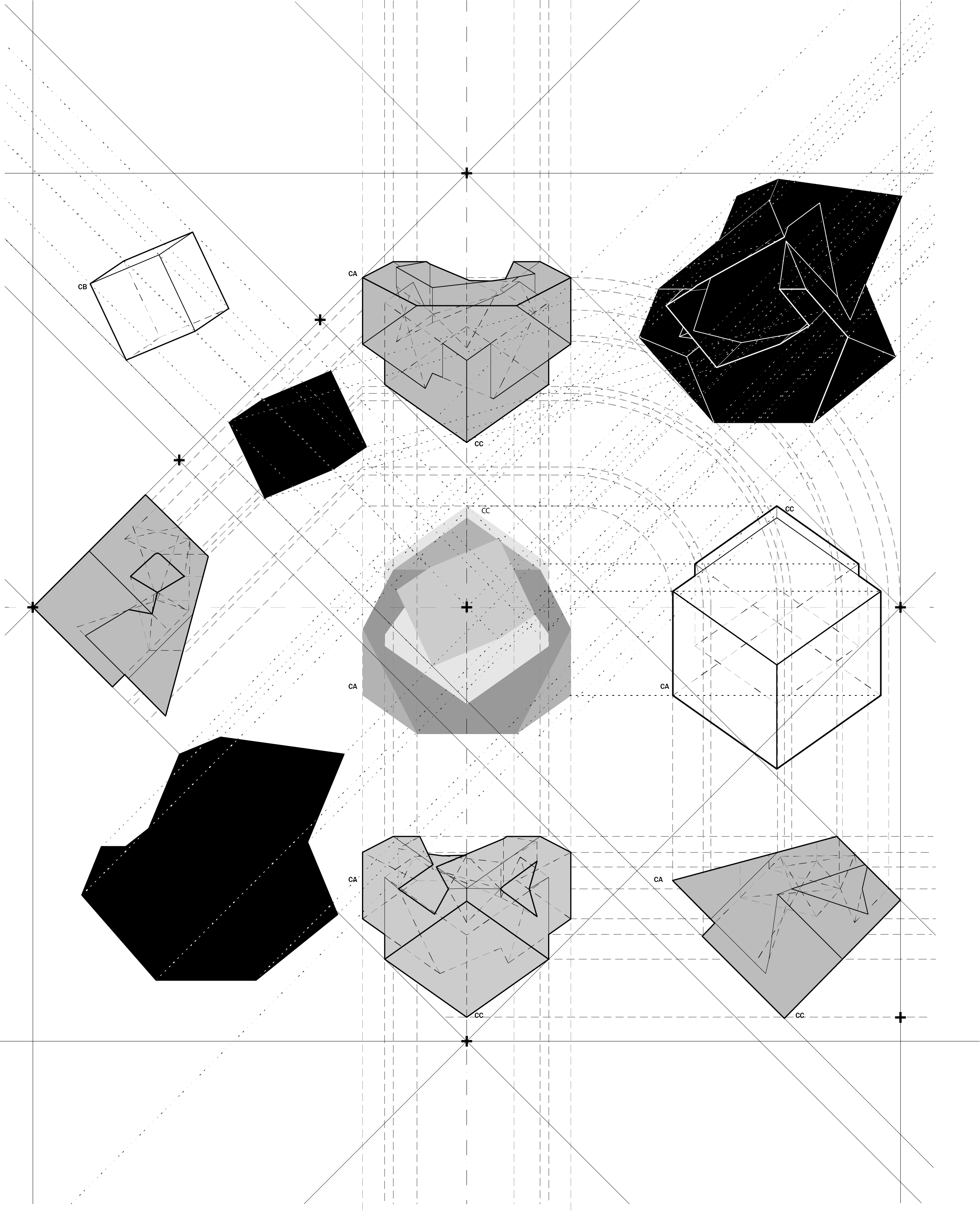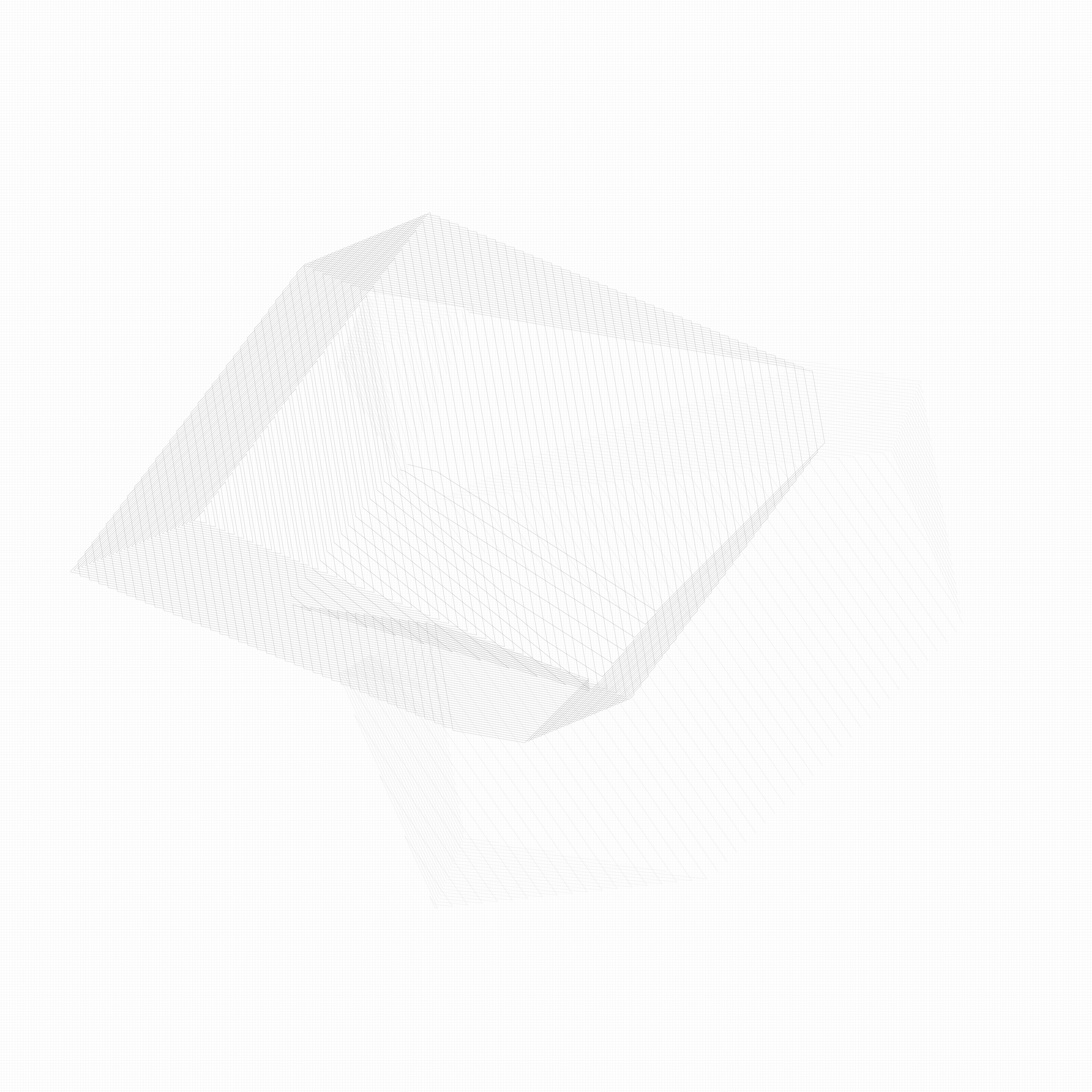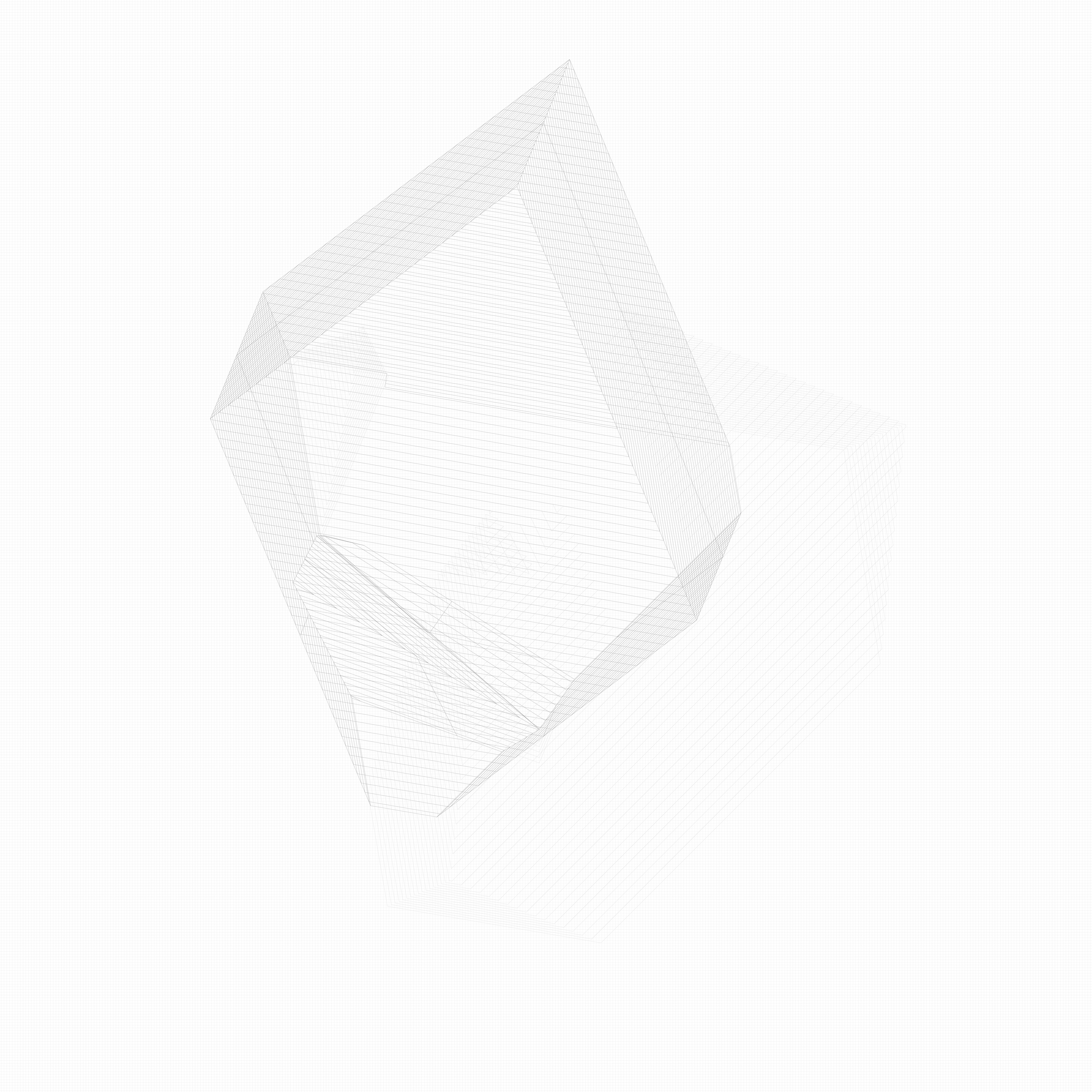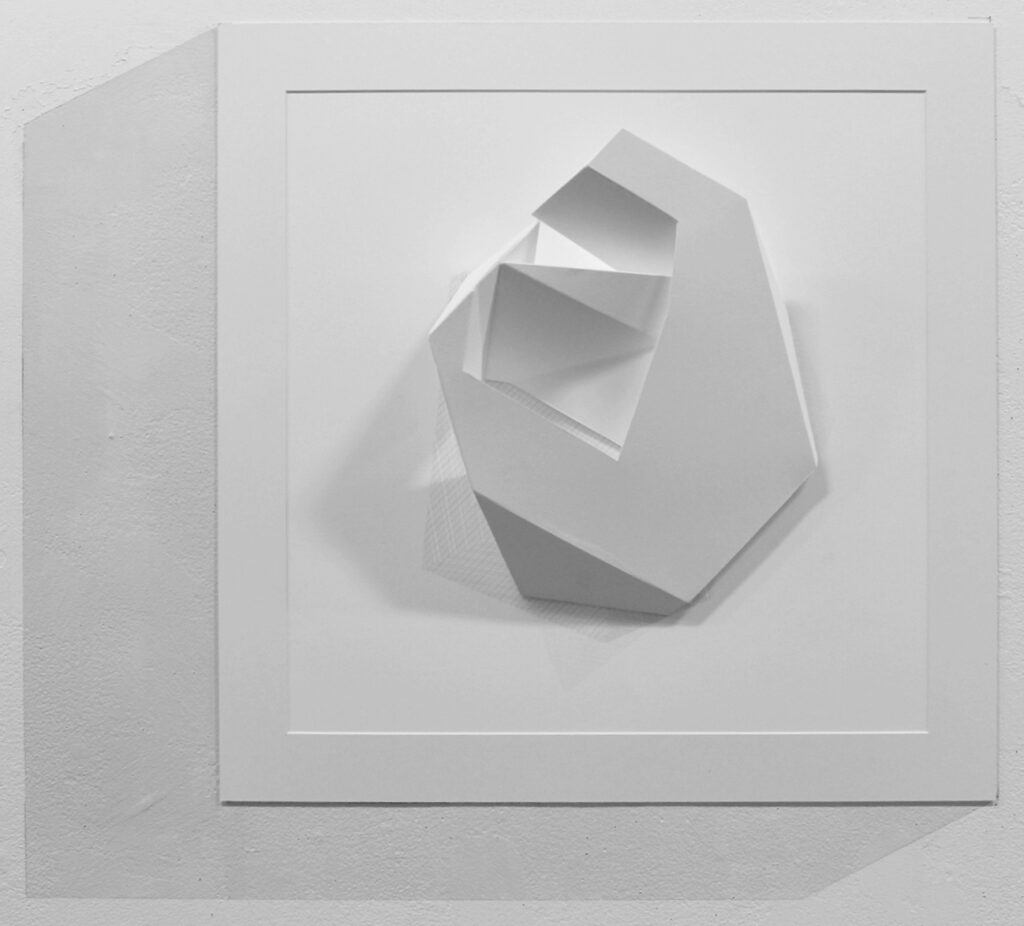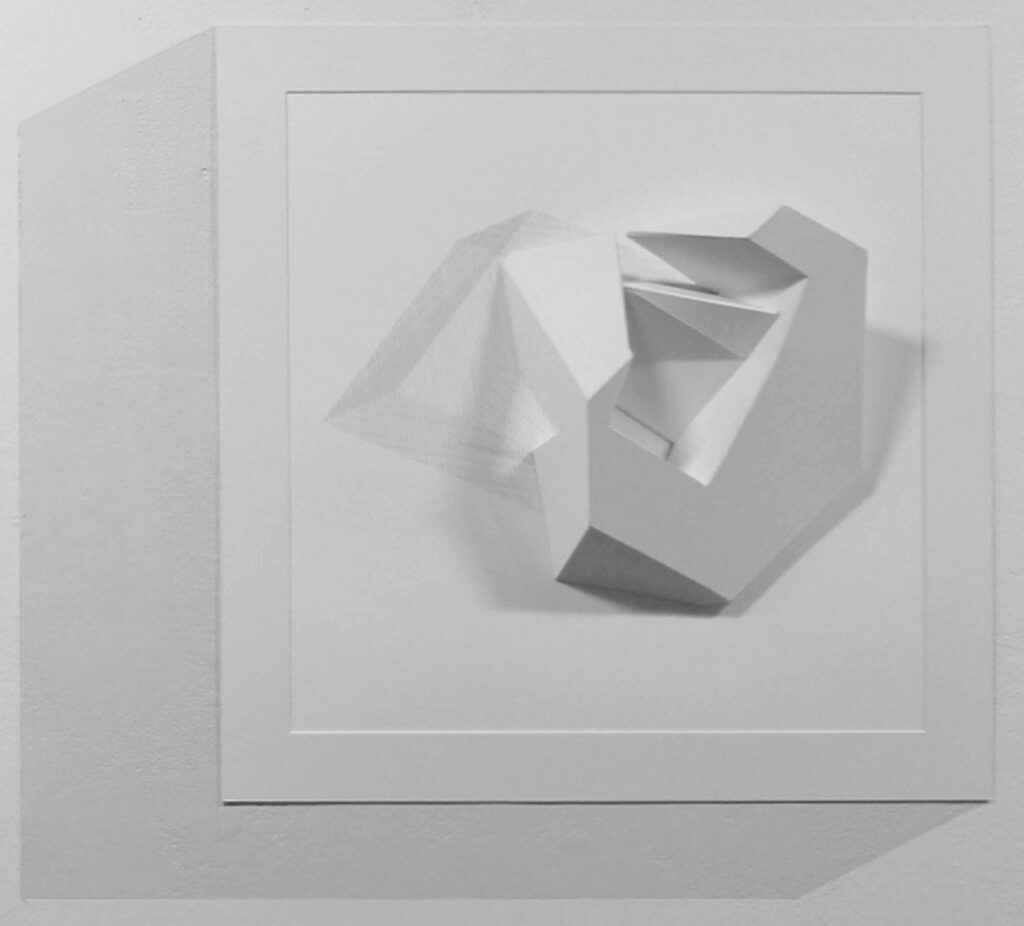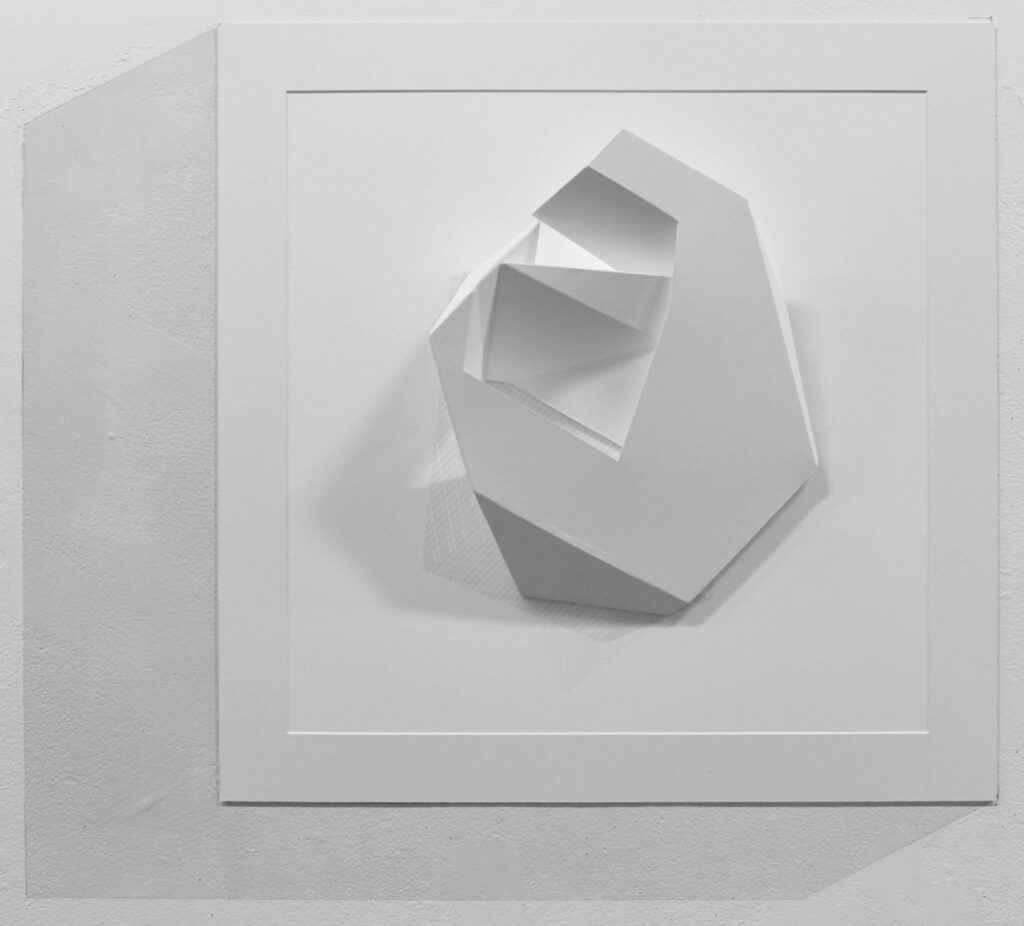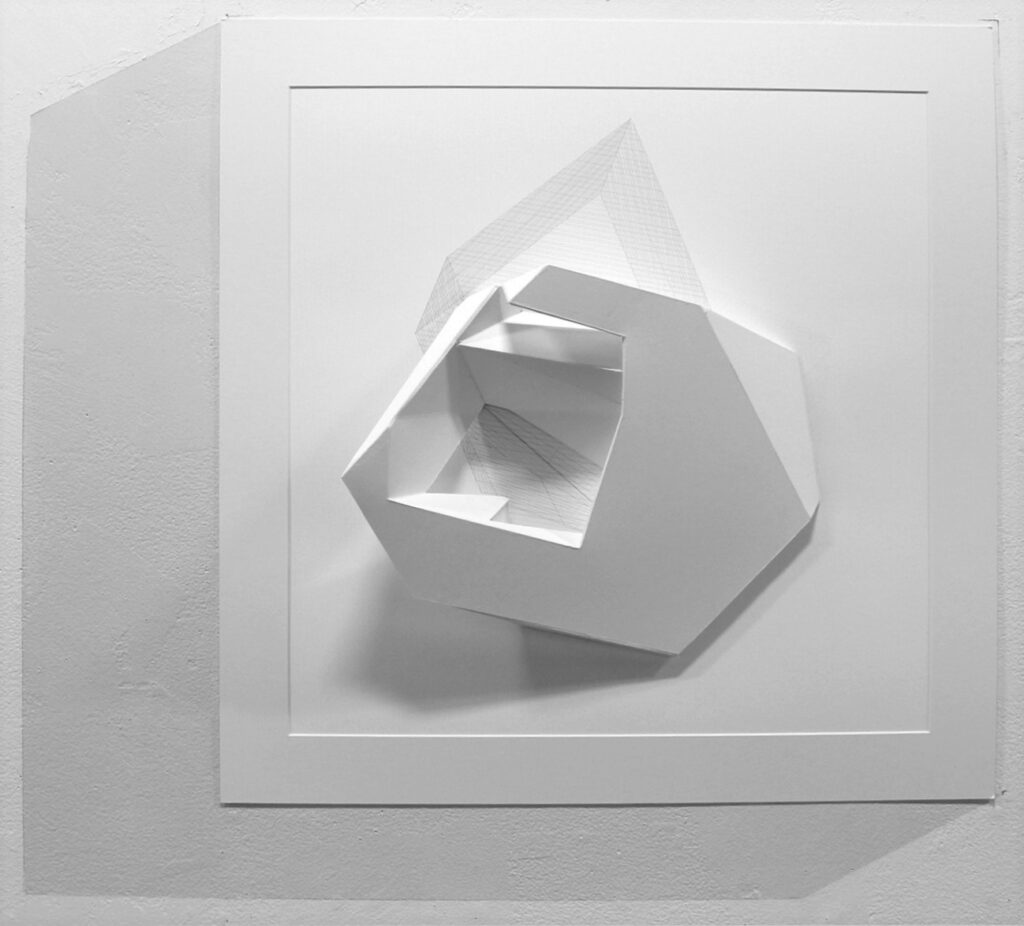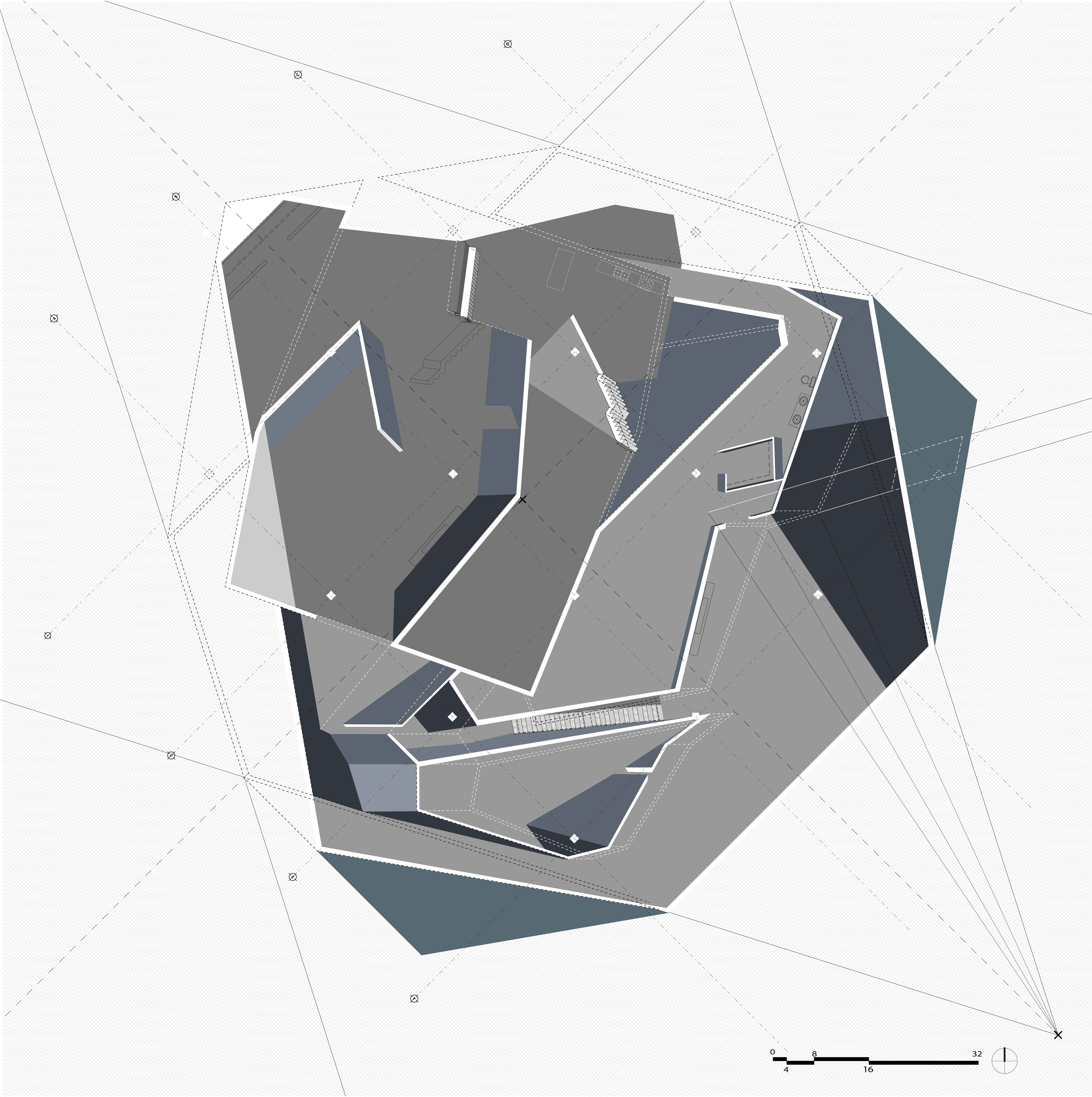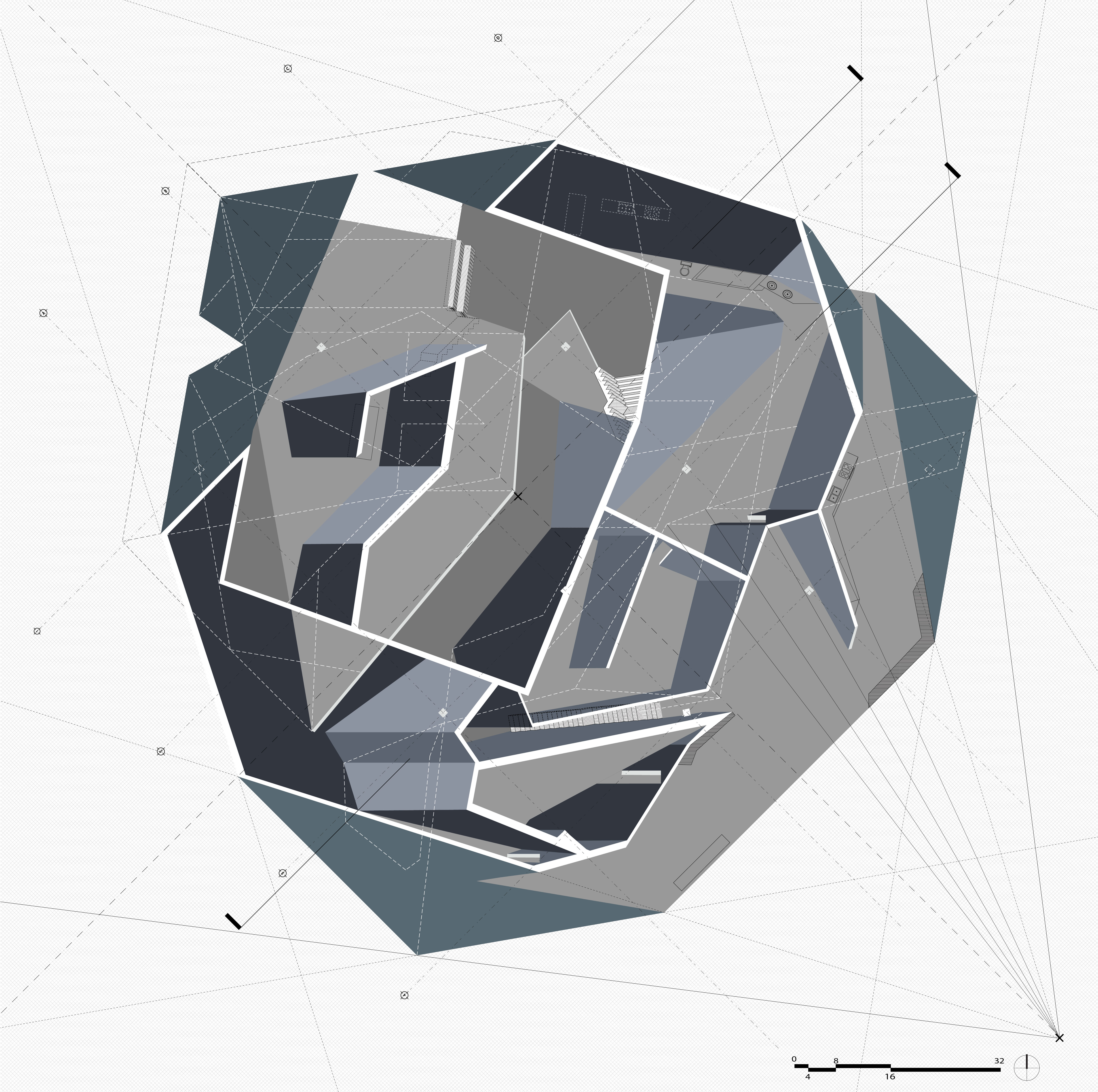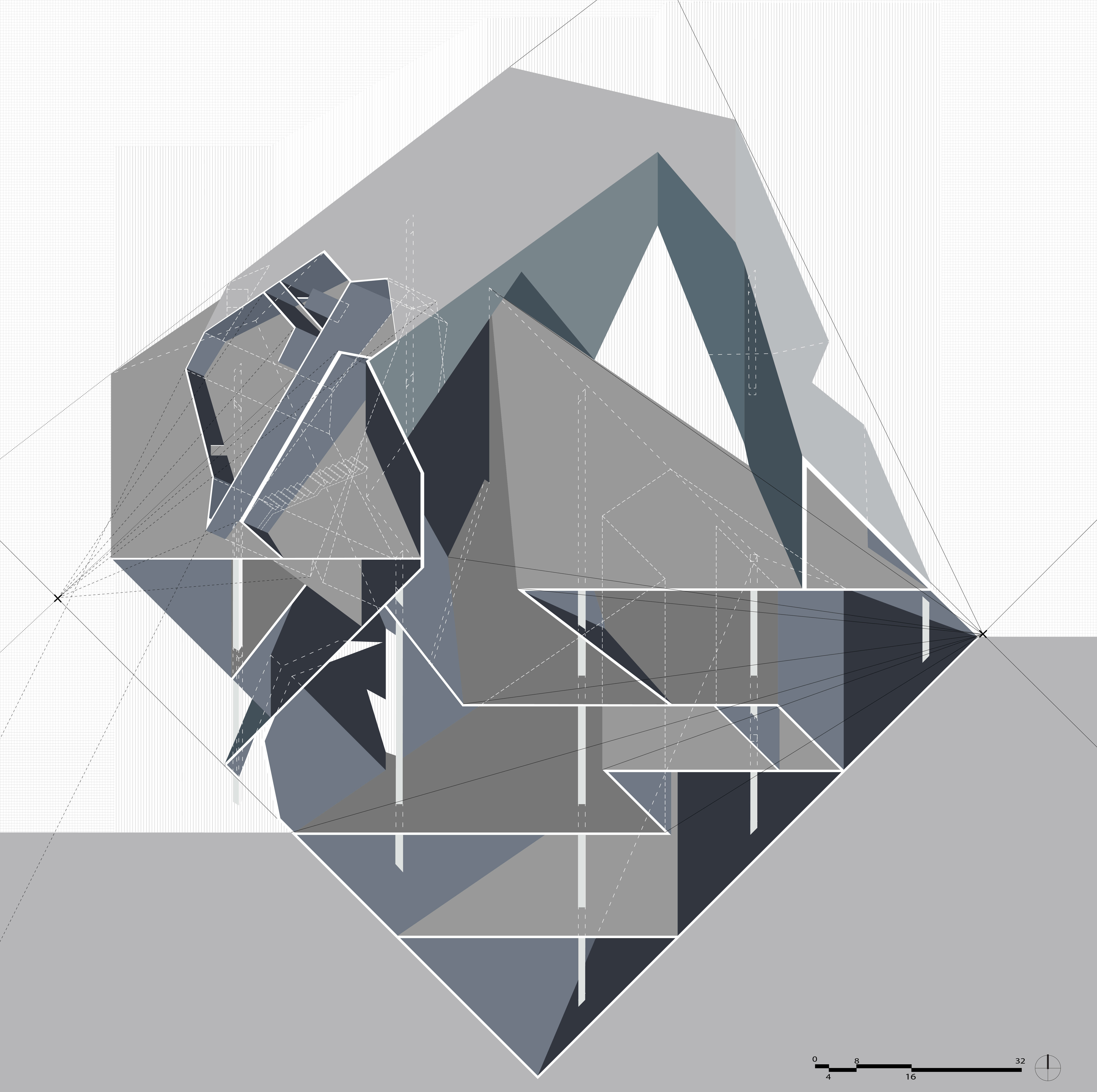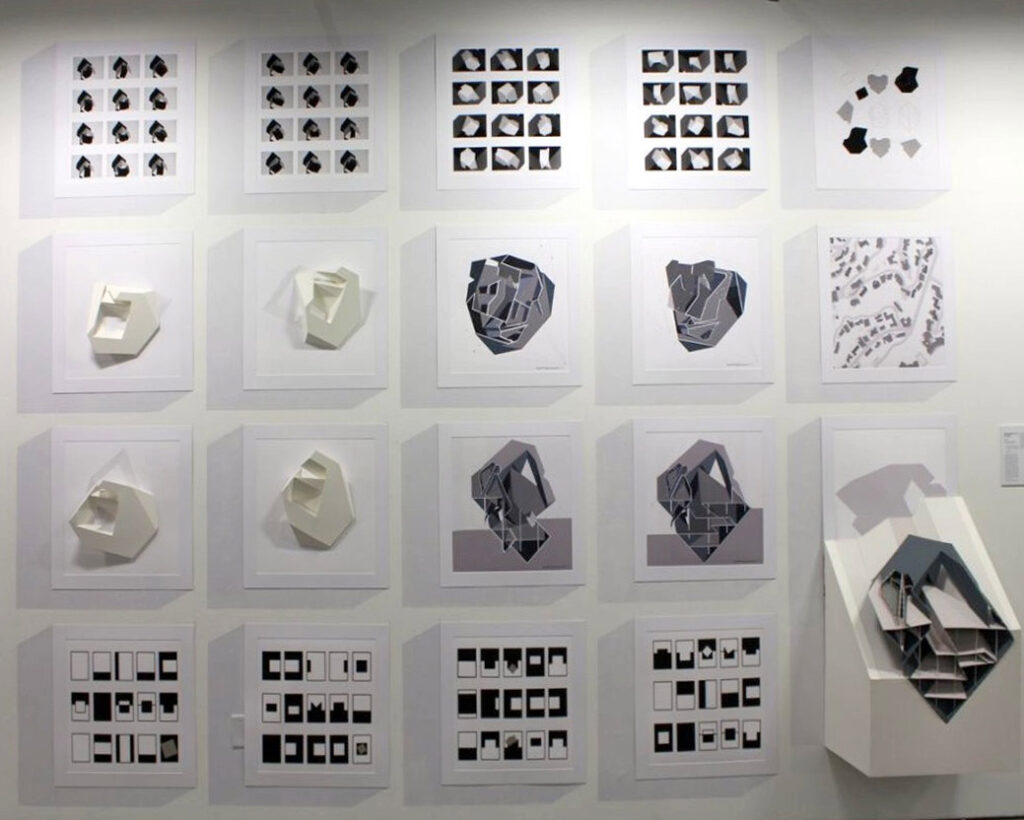Casting Shadow
Sara Moomsaz
Advisor: Anna Neimark
Representational techniques—drawings, renderings, and models—can be understood not merely as descriptions of objects, but also as active participants in the construction of reality. For instance, projecting the shadow of a form through abstract transformations can physically alter that form. To construct a space of working between reality and abstraction, I begin with a cube.
The cube CA has four walls, one floor, and a roof. It expands to its maximum size on the sloped site. Another cube CB enters with its shadow and rotates over CA. As CB casts its shadow onto CA, a new profile appears on the faces of CA. This new profile is neither an abstract shadow nor a cube face. It has its own geometry and identity. The overlap of abstraction and reality creates a new space which causes a new cube to delaminate from CA. It is called CC. These two cubes represent a series of projections through shadows and drawings, which link them formally to each other. Active transformations between CA and CC produce new spaces that are both abstract and real.
Now CA and CC are two houses on a hillside. They are purposefully designed to include the shadows that they cast into their material forms. Through this representational transformation, new architectural elements are introduced on the interior. The result hovers somewhere between projection and profile.
House of Shadows
